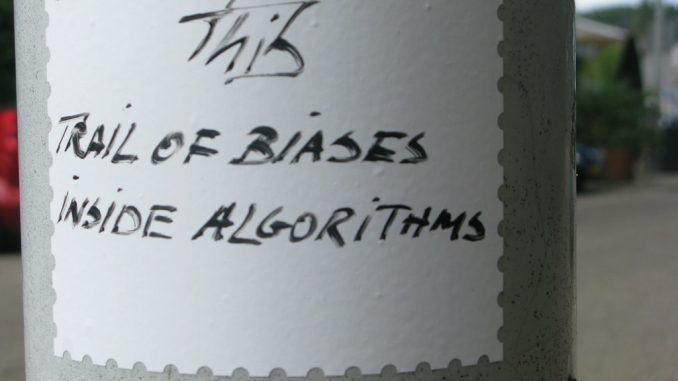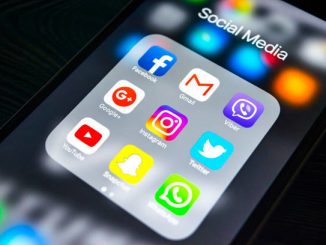
From its roots in the Silicon Valley, the internet has developed with distinct structural inequalities with its narrow view from the cisgender white male persepective on issues involving race, gender and sexuality. This “bro-culture” has had a lasting impact on the affordances of the internet, creating issues of algorithmic bias and allowing the development of malicious cybercultures (Lusioli & Turner, 2021).
Despite this, the affordances of the internet have also allowed those who are affected by said structural inequalities to give themselves and voice as well as engage with others who face similar bias. It is the discourse created by this divide that exhibits the potential for reducing these structural biases while also shedding light on the danger that the development of the internet may also exacerbate these inequalities. By analysing how internet users behave surrounding inequality in race, gender and sexuality online we can further understand how these structural biases will be shaped going forward.
Structural Bias – Racism, Sexism and Heteronormativity
One of the main structural inequalities that have been shaped by the cisgender white male point of view is the online biases surrounding race, gender and sexuality. Noble (2018) explores algorithmic bias through her analysis of the Google searches and the autocompletion of searches which suggests to users what they may be searching for depending on their initial entry into the search bar. When searching the term “black girls”, Noble was confronted with the clear algorithmic bias that paints black women as sexual objects in the search results mainly being pornographic despite the fact that she had a history of searching for and engaging with black feminist material. This not only highlights the fact that racial bias in the roots of the internet shape what we are exposed to but that this is exacerbated by the gender bias which has a clear representation of women as objects of desire and beauty rather than of authority and independence.

“Compassion through Computation: Fighting Algorithmic Bias” by World Economic Forum is licensed under CC BY-NC-SA 2.0
Another clear example of how algorithmic bias warps the point of view of users is the fostering of toxic technocultures on platforms like Reddit in relation to the cases of #GamerGate and The Fappening.
Massanari (2015) analyses how the design of Reddit and its algorithm whereby the systems of karma and upvoting aggregates the content on the platform, which “can implicitly suppress certain types of content and highlight others and also serves as an unintentional barrier to participation” (Massanari, 2015, p337). This herding of content and exposure by algorithmic bias allowed the festering of malicious groups with antifeminist and sexist agenda in the cases of #GamerGate and The Fappening. This of course is not limited to race and gender, but also of sexuality, where sexual minorities online are constantly challenging and confronted by the heteronormative standards that have shaped the development of the internet (Burgess, Cassidy, Duguay and Light, 2016).
As Griffin (2016) states, even in queer spaces like many dating apps and sites, these were clearly built on the premise of the male/female gender binary and does not properly accomodate those who blur the line between this binary. It is clear from these examples that the structural inequalities of the internet that create algorithmic bias still have a damaging impact on how behaviour is shaped online and continue to exacerbate inequality as the internet develops.
Digital Activism and Community
However, it is also important to examine how the development of the internet and its subcultures has allowed for activism online as well as the formation of networks connecting those who are affected by these structural inequalities. This is particularly prominent in social media platforms like Twitter, where the use of hashtags has been a powerful avenue for digital activist movements. This is evident in the multitude of examples of hashtags surrounding racial, feminist and sexual discourse, including #BLM, #MeToo and #LoveWins. As Bonilla and Rosa (2015) point out, this use of hashtagging to bring activist movements like BLM to the forefront of social platforms exhibit how they “have become powerful sites for documenting and challenging episodes of police brutality and the misrepresentation of racialised bodies in mainstream media” (Bonilla and Rosa, 2015, p4).

“Megaphone” by Allio is licensed under CC BY-ND 2.0
Using these hashtags not only brings attention to issues that are important to shed light on, but also connects those who actively participate in online discourse surrounding marginalised communities and allows users to build networks with like minded individuals. As Williams (2015) puts it, this networked community allows for users to connect with one another and engage with dialogues surrounding these issues without relying on traditional media and their often politicised or problematic portrayals of marginalised communities. Hence, it is valuable to understand how the development of the internet may also play a role in challenging the structural inequalities from its foundations by acting as an avenue for online activism and the creation of networked communities.
The Myth of ‘Us’
Ultimately, however, this is essentially countered by the modern myth of ‘us’ in platformed social interaction where what we see and interact with is not an accurate reflection of the whole social and political state of the real world.

“network” by michael.heiss is licensed under CC BY-NC-SA 2.0
Couldry (2014) examines how the progressiveness and change in political environment that can be witnessed online is dangerous to lean into due to the manufactured sense of collectivity and understanding of the collective in a “digitally saturated environment” (Couldry, 2014, p608). Due to the nature of online platforms being deliberately marketed to the individual, content saturation may occur, where only a part of all content surrounding an issue may begin to represent the whole in the eyes of the user.
This not only makes users believe that what they are exposed to represents a majority, when applied to situations involving both positive movements and toxic technocultures, both sides receive a warped understanding of the social reality they live in and hence widens the divide by offering little room for constructive discourse over these issues. This potentially limits progress as those who hold certain beliefs and understandings will most likely only be exposed to other users and content that aligns with them, a trap that Couldry warns against falling into.

“Celebrating a new America #lovewins 58190” by tedeytan is licensed under CC BY-SA 2.0
Griffin (2016) offers an example of this content saturation that can potentially drown out positive discourse that can truly lead to long term progress. He discusses how a post under the #LoveWins hashtag after the passing of same sex marriage offered a valid critique that a major problem lies in the fact that “marriage becomes the hinge on which so many rights and freedoms pivot” (Griffin, 2016, 170), yet was overshadowed by the ‘collective’ which placed a far greater importance on celebration instead of encouraging more open dialogue.
Moving Forward
From this, there remains the question of how the further development of the internet will change and shape these structural inequalities, whether for the better or worse. It is clear that in the current digital environment, the factors that appear to increase inequality seem to outweigh those that allow marginalised communities to attempt to decrease it. The lasting effects of the ‘bro-culture’ stemming from the cisgender white male perpective creates algorithmic biases and platformed discrimination against minorities in terms of race, gender and sexuality. While the internet offers an avenue for marginalised groups to raise concerns and form networks with others to bring awareness to these issues, the false collectivity created by content saturation hinders true progress in closing this divide. Moving forward, more attention should be paid towards how the nature of interactions on social platforms dictate our perspectives and by understanding this, seek out more opportunities for valuable discourse to map out a path towards decreasing this inequality and creating progress.
References:
Bonilla, Y., & Rosa, J. (2015). #Ferguson: Digital protest, hashtag ethnography, and the racial politics of social media in the United States. American Ethnologist, 42(1), 4-17. doi:10.1111/amet.12112
Burgess, J., Cassidy, E., Duguay, S., Light, B. (2016). Making Digital Cultures of Gender and Sexuality With Social Media. Social Media + Society, 2(4). 1-4. doi:10.1177/2056305116672487
Couldry, N. (2014). The myth of ‘us’: digital networks, political change and the production of collectivity. Information, Communication and Society, 15(6), 608-626. doi:10.1080/1369118X.2014.979216
Griffin, F. H. (2016). Afterword: #LoveWins. In Feeling Normal: Sexuality and Media Criticism in the Digital Age (pp. 169–174). Indiana University Press.
Griffin, F. H. (2016). Wanting Something Online. In Feeling Normal: Sexuality and Media Criticism in the Digital Age (pp. 140–168). Indiana University Press.
Lusioli, A. & Turner, F. (2021).‘“It’s an Ongoing Bromance”: Counterculture and Cyberculture in Silicon Valley—An Interview with Fred Turner. Journal of Management Inquiry, 30(2), 235-242. doi:10.1177/1056492620941075
Massanari, A. (2017). #Gamergate and The Fappening: How Reddit’s algorithm, governance, and culture support toxic technocultures. New Media & Society, 19(3), 329–346. doi:10.1177/1461444815608807
Noble, S. U. (2018). A society, searching. In S. U. Noble (Ed.) Algorithms of Oppression: How search engines reinforce racism (pp. 15-63). New York: NYU Press.
Williams, S. (2015). Digital Defense: Black Feminists Resist Violence With Hashtag Activism. Feminist Media Studies, 15(2), 341-344. doi:10.1080/14680777.2015.1008744

This work is licensed under a Creative Commons Attribution-NonCommercial-ShareAlike 4.0 International License.


